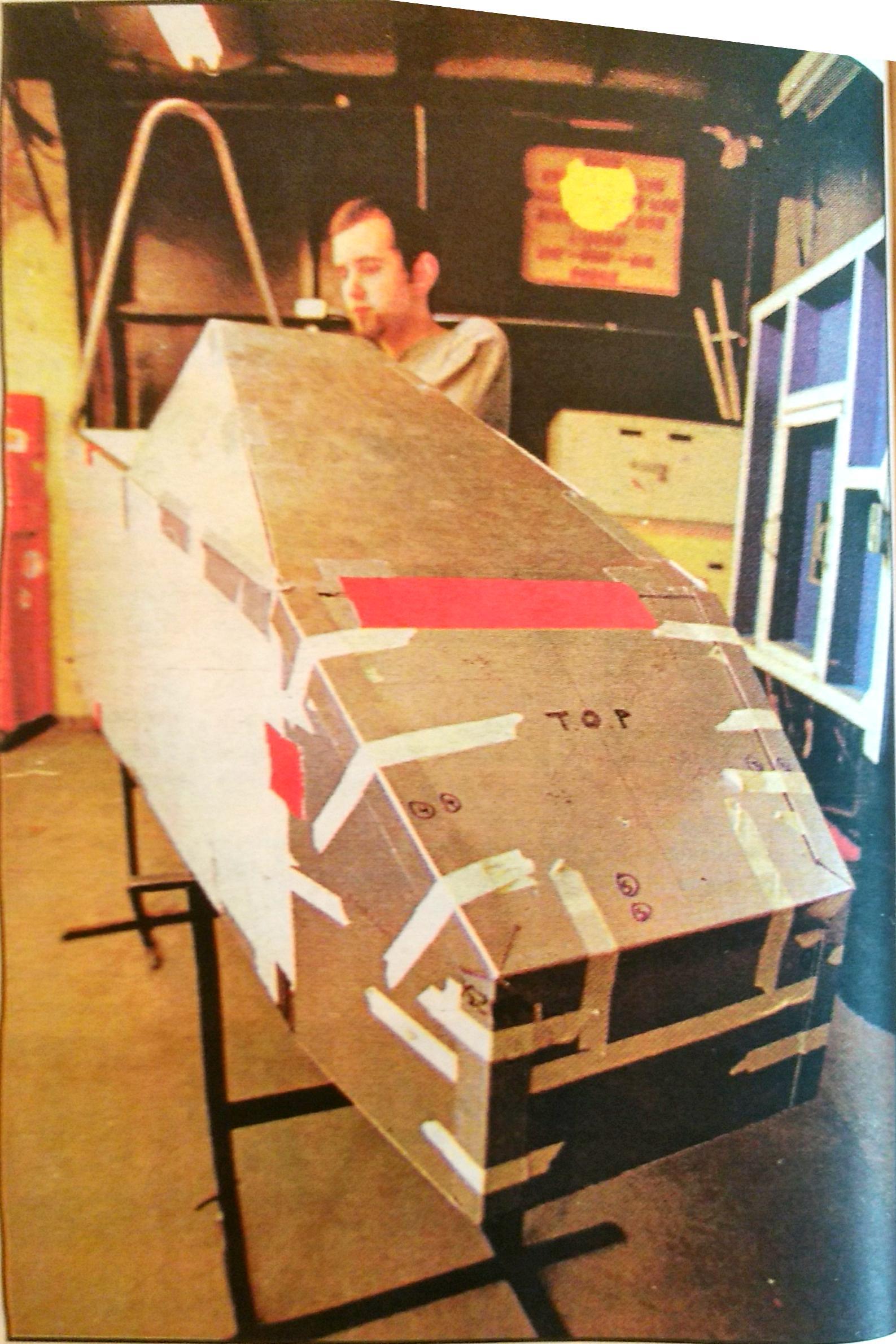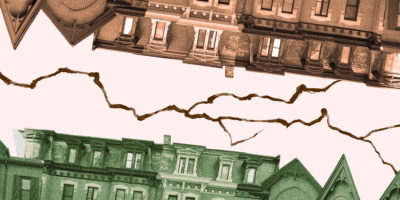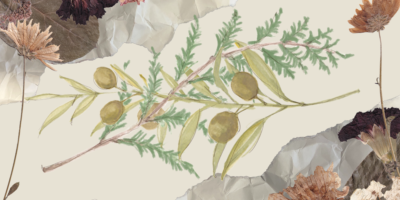By Natalie Alcoba
In a corner of East Kerr Hall basement, below three floors of classrooms, is the lab where fourth-year mechanical engineering student Mathew Thomas spends a lot of his time. Inside, a set of goggles hang from the corner of a work bench. Tools sit behind locked cabinets. A bust of Elvis stares out from the only window ledge. Near the back door, next to the wind tunnel, Thomas and another student hover over the aluminum frame of an automobile, debating about where to put the steering wheel. Every few minutes, what sounds like a coin hitting the ground pierces the constant hum of machinery. No one’s sure what the noise is.
Over the next few months, Thomas and his team will add a body to the frame, along with some wheels, an engine and the other essentials that make up a mini-Formula One race car. This will be the school’s first solid attempt at competing the the Society of Automotive Eningeers’ (SAE) student design competition, the Monaco Grand Prix for the world’s engineering students. Its team, however, still has miles to cross to get to the starting blocks in Pontiac, Mich., this spring.
Thomas, the captain of the formula team, is certain he and his teammates will be ready. After all, he’s been preparing for this since high school.
“Everyone in my shop class were all mechanics. I was the only one that was interested in the engineering side of mechanics,” explains Thomas, standing beside a chalkboard in the lab covered with equations unintelligible to most. “I didn’t want to repair the vehicles, I wanted to invent them.”
This desire drives Thomas and his teammates forward, along with their quest for practical experience and a good job after graduation. And in spite of uncertain financial support and inadequate university facilities, this group of students from engineering disciplines such as aerospace and mechanical has committed countless hours, days and nights to the design and construction of its race car.
“Everyone here has their own special talent which they bring to the team which adds to the overall performance,” 22-year-old Thomas said. “I like to call it the all-star team.”
For the past two decades, teams of student engineers from around the world have gathered in Pontiac every May to race their creations. The competition is held by SAE, a group of 80,000 engineers, business executives, educators and students who exchange ideas for advancing the engineering of motorized vehicles.
In May, about 1,000 students from 110 universities are expected to participate in the formula competition, the other two auto categories, mini-baja and supermileage or aircraft design. Ryerson will have entries in all four races. The race cars are judged on appearance, engineering design, speed and how well they run on fuel. The top 10 finishers receive a cash prize ranging from $250 to $3,000.
This will be Thomas’ second trip to Pontiac. As with his previous experience, planning for it started months ago.
The team gathered in East Kerr Hall’s basement in January to brainstorm, mapping out a life-size sketch of its dream machine. The paper car was then converted into a life-sized cardboard model. By April, a wooden replica had taken the place of the cardboard one.
“It was important for us to visualize where things were going to go,” says Thomas, pointing at a wooden model, now tucked away in a corner of the lab.
The end of the school year, however, didn’t signify the end of the project. Over July and August, a group of eight guys that included Thomas got together for at least four hours every evening in a Markham garage to build the car’s aluminum frame. The members had to meet 40 kilometres north of Ryerson because the school’s lab didn’t have the equipment or space to accommodate them. So far, the majority of the work on the car has been done off-campus. The students put up with these conditions because of the skills they learn working on the project.
“This opportunity gives us something to use as credentials,” says team member Jayson Smith, a third-year aerospace engineering student. “It’s enjoyable and you learn 10 times more than if you were in the classroom.”
Although enthusiasm and drive create the car, the project’s success hinges on money. As a student group, the team qualifies for financing under the school’s Project Funding Allocations Committee. However, what it has received — about $10,000 over the past two years — is not enough to cover the cost of the project. This year, about $15,000 is needed to get the car on the road.
“In order to get more funding the university has to see results,” says Thomas, who recently submitted an application for additional money to the Ryerson Engineering Student Society, which contributes annually to the team. But, he says, results are hard to come by without adequate financing. “Basically, we’re doing this for them,” he said of the international exposure Ryerson would get with a solid performance at the SAE competition.
Derek Northwood, dean of the faculty of engineering and applied science, knows these competitions can do wonders for a university’s reputation. “This shows Ryerson’s ability in the engineering student community. It increases our profile and makes other students consider doming here to study,” says Northwood, whose faculty contributes some of its budgets to the team.
In addition, Northwood says these types of activities are critical to the renewal of the school’s engineering accreditation because they show “involvement in the program, design skills and entrepreneurial spirit.”
The faculty was recently visited by the Canadian Engineering Accreditation Board, which assesses engineering programs to determine whether they can meet academic standards. Thomas’ car was used to showcase student work to board accreditors.
An information display set up for the accreditors still stands in the Kerr Hall lab next to the car made of aluminum sheets that are sandwiched with honeycomb-like shapes to strengthen the frame. “[Design is] our main focus,” Thomas says. “We get a lot of engineering points if we show that we are actually thinking about the car.”
Most competitors, however, are looking to score more than engineering points. The SAE competition is sponsored by the top three U.S. automakers, Chrysler, Ford and General Motors, which set up recruitment tents at the event.
“The main purpose for the big three to sponsor the event is to recruit entry-level engineers that have the skills required for the engineering workforce,” says Lori Pail, SAE’s marketing and promotions official. She says the skills needed for and SAE team — engineering design, creativity, project management and teamwork — are the qualifications Chrysler, Ford and GM look for in employees.
“If a student is serious about working in the automotive industry, then this is an amazing opportunity,” Pail says.
Thomas’ all-star team plan on seizing that opportunity. While the momentum that carried it through the summer has slowed because of school assignments and exams, Thomas is confident the team will finish the car by March. The bulk of the work is already done, and the rest of it, including analysis and electric-system planning, has been split up among the team members.
While the all-star team may soon be ready for the road, it’s in for some tough competition in Pontiac, which draws students from the top engineering universities in the United States and Canada.
“My goals for this year are just to learn from the competition and see what happens,” Thomas says. “We’ll figure out what we are doing wrong and go home and fix it.”











Leave a Reply